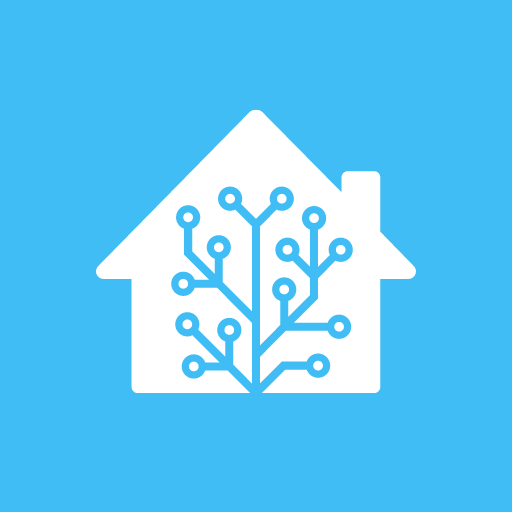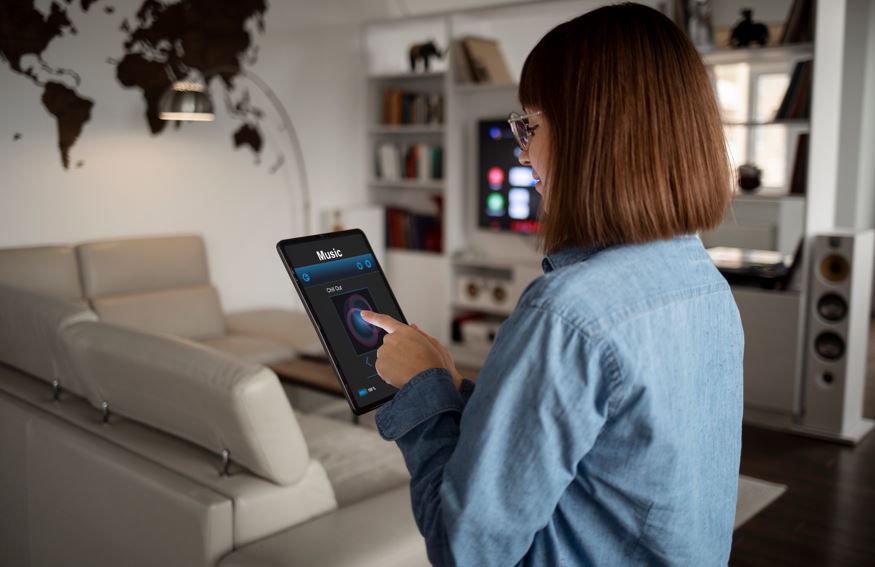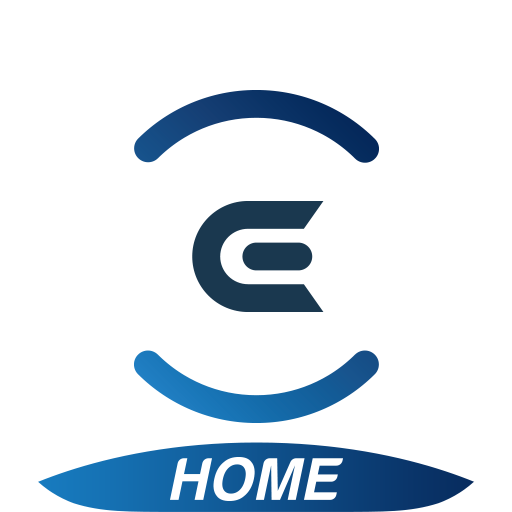Home Assistant
About this app
Seeking to enhance the intelligence and manageability of your home?
Consider exploring the realm of home assistant apps.
This detailed review delves into the essence of a home assistant app, its prominent features like voice control and automation, its functionality, and the advantages of its utilization.
We also present an overview of the various categories of home assistant apps accessible and offer guidance on selecting the most suitable one for your abode.
Learn how these applications can enrich your everyday routine.
What Is a Home Assistant App?
A Home Assistant App is a software application designed to control various smart devices in your home, offering automation and integration capabilities to streamline your smart home experience. The app provides a user-friendly interface that allows you to manage different functions and devices seamlessly.
This user-friendly interface plays a crucial role in simplifying the interaction between the user and their smart home ecosystem. By presenting a visually intuitive platform, Home Assistant Apps give the power to users to effortlessly monitor and command their connected devices from a centralized hub. Through these interfaces, individuals can easily set schedules, adjust settings, and receive notifications, thereby enhancing convenience and efficiency within their smart homes. This emphasis on user experience prioritizes accessibility and simplification in navigating the complexities of smart home technology, ensuring a more seamless and engaging interaction for users.
What Are the Features of a Home Assistant App?
A Home Assistant App is equipped with a variety of features, including voice control, mobile app accessibility, seamless integration with various smart devices, and compatibility with different platforms. Its functionality improves the automation and control of smart home devices.
Through voice control, users can easily manage multiple smart devices like lights, thermostats, security cameras, and more by simply speaking commands. The accessibility of the mobile app allows users to control their home from anywhere, offering convenience and peace of mind.
These apps are designed to integrate smoothly with popular smart home systems such as Amazon Alexa, Google Assistant, Apple HomeKit, and others. This ensures that users can establish a centralized hub for efficiently managing all connected devices. With the ability to customize settings and routines, home assistant apps provide a personalized and user-friendly experience for enhancing home automation.
1. Voice Control
Voice Control is a significant feature of Home Assistant Apps that permits users to communicate with their smart devices through voice commands. This feature plays a vital role in improving home automation and streamlining the management of various smart devices.
Voice commands allow users to smoothly adjust settings, such as lighting, thermostat, or entertainment systems, without needing to physically interact with each device. By simply vocalizing commands like 'turn off the lights' or 'set the temperature to 72 degrees,' individuals can easily establish a comfortable and convenient living environment. This hands-free interaction not only provides convenience but also improves accessibility for individuals with mobility challenges or disabilities, making smart home technology more inclusive and user-friendly.
2. Remote Access
Remote Access is a crucial functionality offered by Home Assistant Apps, allowing users to monitor their smart home devices from anywhere. It provides real-time alerts and notifications, enhancing security and privacy measures.
This feature not only allows users to check the status of their smart devices remotely but also enables them to receive instant alerts in case of any unusual activity detected. By staying connected to their home automation systems through remote access, users can ensure that their properties are secure and maintain their privacy. With the ability to monitor and control devices from a distance, individuals can have peace of mind knowing they are always aware of what is happening in their smart homes.
3. Automation
Automation plays a crucial role in Home Assistant Apps, give the power toing users to develop personalized automation scenarios and scripts for streamlining tasks and enhancing productivity. Through features like scenes and automations, users have the flexibility to customize their smart home experience.
Predefined scenes enable users to establish specific actions triggered by factors like time of day, sensor data, or user interactions. By integrating predefined scenes with custom scripts, users can create complex automation sequences tailored to their specific requirements. This high level of customization not only boosts efficiency but also enhances the user experience by simplifying daily routines and improving convenience in managing smart devices.
4. Integration with Smart Devices
Home Assistant Apps provide seamless integration with a variety of smart devices, serving as a central control hub for managing different devices. They are compatible with various communication protocols such as Zigbee, Z-Wave, Wi-Fi, and Bluetooth, ensuring versatility and compatibility with a wide range of smart devices.
This compatibility with multiple communication protocols enables Home Assistant Apps to connect and control smart devices from different manufacturers, offering users a unified and efficient experience. By supporting Zigbee, Z-Wave, Wi-Fi, and Bluetooth, these apps allow users to easily manage smart thermostats, lights, security cameras, and other devices through a single interface.
This flexibility not only simplifies the setup process but also enables users to automate routines and settings across various brands of smart devices seamlessly. The adaptability in communication protocols enhances the functionality and convenience of home automation systems.
How Does a Home Assistant App Work?
A Home Assistant App functions by enabling users to set up and configure their smart home devices through a user-friendly interface. The app offers guidance on resolving common issues and includes a comprehensive user manual for assistance.
Users can easily link their devices to the app by following straightforward on-screen instructions, such as choosing the device type and connecting to the home network. The app permits customization of device settings, task scheduling, and automation of routines to streamline daily activities. If users encounter technical difficulties, the troubleshooting feature helps them identify and resolve issues promptly. The user manual acts as a useful resource, providing step-by-step instructions and visual aids for managing and optimizing the smart home system.
What Are the Benefits of Using a Home Assistant App?
The utilization of a Home Assistant App provides several advantages, such as increased convenience, improved energy efficiency, heightened security measures, and potential cost savings. These applications simplify everyday tasks and offer a more efficient and secure smart home experience.
By incorporating smart home technology, these apps give the power to users to manage various devices through voice commands or smartphone interactions. Users can easily regulate lighting, thermostats, and security systems, resulting in a comfortable and personalized living environment. Home Assistant Apps enable users to remotely supervise their residences, receive immediate alerts in case of emergencies, and significantly improve overall household safety. Additionally, with energy monitoring capabilities, individuals can monitor their utility consumption and embrace more sustainable habits, ultimately leading to long-term cost savings.
1. Convenience
One of the key benefits of using a Home Assistant App is the convenience it offers in managing smart home devices. With features like remote access and a seamless user experience, these apps simplify home automation tasks and improve overall convenience.
Users can effortlessly control their smart devices from anywhere, whether they are at home, work, or on vacation. The ability to adjust thermostat settings, lighting, security systems, and more at the touch of a button not only enhances convenience but also provides peace of mind. The intuitive interfaces of Home Assistant Apps make it easy for anyone to navigate and customize their smart home settings according to their preferences, ultimately creating a more personalized and tailored user experience.
2. Energy Efficiency
Home Assistant Apps play a role in enhancing energy efficiency by providing users with the ability to monitor and automate the control of smart devices such as plugs, lights, and thermostats. These apps are designed to optimize energy usage and encourage sustainable practices in the management of smart homes.
Using these home assistant apps allows individuals to actively monitor their energy consumption patterns, schedule devices to operate only when necessary, and remotely adjust settings to conserve energy. Smart plugs enable users to deactivate standby power for unused appliances, while smart lights can be programmed to adapt brightness levels according to natural light availability. Smart thermostats learn household preferences and make adjustments to ensure efficient heating and cooling, ultimately reducing energy waste and costs.
3. Increased Security
Home Assistant Apps contribute to enhancing security measures by providing features such as privacy protection, real-time monitoring, and integration with security devices like cameras, sensors, and smart locks. These apps aid users in protecting their smart homes and maintaining their privacy.
They offer an additional security layer by enabling users to remotely access and manage their security devices from any location, ensuring continuous monitoring and peace of mind. These apps also allow for customization options to set up alerts and notifications for any unusual activities detected by the integrated security devices.
Through seamless integration with various security tools, Home Assistant Apps establish a comprehensive security ecosystem that effectively safeguards smart homes against potential threats and breaches.
4. Cost Savings
The use of Home Assistant Apps can result in cost savings by facilitating automation features that optimize the utilization of smart devices. These apps create alerts and notifications that assist users in making informed decisions, ultimately decreasing energy expenses and improving efficiency.
These alerts remind users to modify settings for heating and cooling systems based on real-time energy consumption data, ensuring that energy is not wasted in unoccupied rooms. Through integration with smart meters, Home Assistant Apps can offer detailed insights into energy usage patterns, helping users pinpoint areas where energy efficiency can be enhanced.
This proactive approach to energy management leads to notable cost savings over time and contributes to a more sustainable and environmentally friendly household.
What Are the Different Types of Home Assistant Apps?
There are different types of Home Assistant Apps available, such as standaloneevereb apps, hub-based apps, and virtual assistants. Each type offers unique functionalities to accommodate various smart home configurations and user preferences.
Standalone apps are independent applications that can control smart devices directly, without the need for a central hub. They provide quick access and flexibility for users. On the other hand, hub-based apps require a central hub or controller to connect and manage smart devices that use different protocols. These apps offer centralized control and compatibility with a wide range of devices.
Virtual assistants, like Amazon Alexa and Google Assistant, leverage artificial artificial intelligence to comprehend and execute voice commands. They seamlessly work together with smart home devices for hands-free operation and personalized interactions.
1. Standalone Apps
Standalone Home Assistant Apps are designed to operate independently and offer customization options to meet specific user needs. These apps often involve community development efforts to expand their features and capabilities.
Users can customize their experience with these standalone apps according to their preferences, as they are designed to function autonomously. Through community-driven initiatives, users can access a variety of plugins, themes, and extensions that enhance the functionality of the app. The collaborative nature of these apps creates a dynamic environment where users can actively contribute to the growth of the app by sharing new ideas and resources. This collaborative effort not only improves the overall user experience but also ensures that the apps can adapt to evolving technology trends.
2. Hub-Based Apps
Hub-Based Home Assistant Apps function as central control hubs for managing smart devices, ensuring compatibility and facilitating seamless updates. These apps streamline device management and configuration processes for enhanced user convenience.
By serving as the central nervous system of a smart home, these intelligent apps allow users to monitor and control a wide array of connected devices effortlessly from a single interface. With their robust compatibility with various smart home gadgets, they eliminate the inconvenience of using multiple apps for different devices, promoting a more integrated and cohesive smart home experience. These hub-based assistant apps play a crucial role in ensuring that all connected devices receive necessary updates promptly, protecting against security vulnerabilities, and enhancing overall system performance.
3. Virtual Assistants
Virtual Assistants in Home Assistant Apps, such as Amazon Alexa, Google Assistant, and Apple HomeKit, provide voice-controlled functionalities and seamless integration with a wide range of smart devices. They improve user interaction and establish a connected smart home ecosystem.
These virtual assistants give the power to users to command lights, thermostats, security cameras, and more with voice prompts. By linking up with popular platforms like Amazon Alexa, Google Assistant, and Apple HomeKit, users can easily oversee their smart devices through a centralized interface. The user-friendly voice control feature facilitates hands-free operation, enhancing the convenience and efficiency of daily tasks. The integration of these assistants with smart home devices ensures a smooth and interconnected experience, enabling users to monitor and adjust their home environment effortlessly.
How to Choose the Right Home Assistant App for Your Home?
When choosing the ideal Home Assistant App for a home, it is important to consider factors such as compatibility with smart devices, the presence of a user-friendly interface, cost considerations, and insights from customer reviews. These aspects play a key role in selecting an app that aligns with home automation needs.
Compatibility is critical in the selection of a Home Assistant App as it ensures smooth connectivity between devices and the app. A user-friendly interface enhances the overall user experience by allowing for easy navigation and control. Cost considerations are essential to ensure that the app fits within budget constraints. Customer feedback provides valuable insights into the app's performance and reliability, helping in making an informed decision. By evaluating these factors, one can find an app that not only meets but exceeds home automation requirements.
1. Compatibility with Smart Devices
When evaluating Home Assistant Apps, it is important to prioritize compatibility with existing smart devices, such as smart plugs, lights, and thermostats. Seamless integration enhances the functionality and effectiveness of the smart home ecosystem.
Having an app that integrates smoothly with smart plugs allows for easy control of power usage and creation of custom schedules. Compatibility with smart lights enables adjustment of lighting based on preferences or routines, improving convenience and energy efficiency. Syncing with thermostats allows for remote management of temperature settings for optimal comfort and savings. The interconnectedness of these devices through a well-integrated Home Assistant App enhances the overall smart home experience.
2. User-Friendly Interface
A Home Assistant App with a user-friendly interface simplifies the setup process and enhances the overall user experience. It is recommended to look for apps that provide intuitive interfaces and comprehensive tutorials to assist users in maximizing the app's functionalities.
These intuitive interfaces play a crucial role in ensuring that users can easily navigate through the app functions without feeling overwhelmed or confused. By offering clear instructions and user-friendly layouts, these apps make it simple for users to set up and customize their smart home systems. Detailed tutorials guide users step-by-step, making it easier for them to explore the various features and functionalities of the app, ultimately leading to a more seamless user experience.
3. Cost
Cost considerations are important when choosing a Home Assistant App. It is essential to assess if the app provides subscription-based services, premium features, or open-source options to find the most cost-effective solution for smart home needs.
Subscription models can vary, with some apps offering monthly or yearly plans, and others providing one-time purchase options. Premium features, such as advanced automation capabilities or enhanced security protocols, may come with an extra cost.
On the other hand, open-source alternatives may be appealing for those looking for a more budget-friendly option, as they typically offer basic functionalities without recurring fees.
When evaluating cost-effectiveness, it is crucial to match the app's pricing structure with specific requirements to ensure the best value for the investment.
4. Customer Reviews
Customer reviews and feedback provide valuable insights into the performance and reliability of Home Assistant Apps. It is recommended to prioritize apps with positive ratings and reviews to ensure a satisfactory user experience and efficient smart home management.
These reviews offer users a firsthand account of the app's functionality in real-life situations, aiding them in making informed decisions based on others' experiences. Positive feedback may indicate that the app is user-friendly, reliable, and effectively caters to the needs of individuals looking to streamline their home automation.
By taking into account the collective sentiments expressed in reviews, users can navigate the multitude of options in the market and choose an app that aligns with their specific requirements and expectations.
Related Apps
-
ECOVACS HOMEGETHome and Lifestyle
-
Home ConnectGETHome and Lifestyle
-
Cricut Design SpaceGETHome and Lifestyle



















